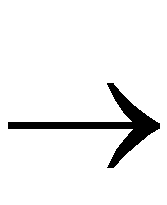Hardware Debugger Reference/User Guide

Preface
About This Manual
This manual describes Xilinx's Hardware Debugger program, a tool used for configuring and debugging FPGA devices.
Before using this manual, you should be familiar with the operations that are common to all Xilinx software tools: how to bring up the system, select a tool for use, specify operations, and manage design data. These topics are covered in the Quick Start Guide.
Other publications you can consult for related information are The Programmable Logic Data Book, Development System User Guide, and Hardware User Guide.
You must consult The Programmable Logic Data Book for device-specific information on Xilinx device characteristics, including readback, boundary scan, configuration, length count, and debugging. The Programmable Logic Data Book is available in hard copy and on the Xilinx web site (http://www.xilinx.com).
See http://www.xilinx.com/partinfo/databook.htm for the current version of this book.
For specific design issues or problems, use the Answers Search function on the Web (http://www.xilinx.com/support/searchtd.htm) to access the following.
- Answers Database: current listing of solution records for the Xilinx software tools
- Applications Notes: descriptions of device-specific design techniques and approaches
- Data Sheets: pages from The Programmable Logic Data Book
- XCELL Journal: quarterly journals for Xilinx programmable logic users
- Expert Journals: the latest news, design tips, and patch information on the Xilinx design environment
If you cannot access the Web, you can install and access the Answers book with the DynaText online browser in the same manner as the Xilinx book collection. The Answers book includes information in the Answers Database at the time of this release.
Manual Contents
This manual covers the following topics.
- Chapter 1, “Introduction,” defines the Hardware Debugger and its operation.
- Chapter 2, “Getting Started,” briefly describes the interface and summarizes the design and hardware requirements for running the Hardware Debugger.
- Chapter 3, “Design Preparation,” is a step-by-step explanation of how to prepare your design and create a configuration data file for use with the Hardware Debugger.
- Chapter 4, “Connecting Your Cable,” describes the different cables available for use with the Hardware Debugger and how to connect them to your computer and target device. It also describes the different software settings used to implement the programming and debugging functions and explains how to test XCheckerTM hardware.
- Chapter 5, “Programming a Device or a Daisy Chain,” explains how to download a design to a single device and verify that the design was sent in its entirety. It also explains how to configure multiple devices.
- Chapter 6, “Debugging a Device,” explains how to display the states of specific signals in a device that was programmed with a design.
- Chapter 7, “Customizing the Interface,” explains how to use macros, how to control the waveform display parameters, and how to use the additional features to optimize your use of the Hardware Debugger.
- Chapter 8, “Menu Commands,” covers all the commands and dialog boxes available from the Hardware Debugger.
- Chapter 9, “CALC Tutorial,” is a step-by-step example of how to use the Hardware Debugger for downloading and debugging configuration data using a Xilinx demonstration board as the target device.
- Appendix A, “Glossary of Terms,” defines common terms used in the context of the Hardware Debugger.
- Appendix B, “Console Commands,” interprets the syntax of the commands that are displayed in the Console window each time you execute a menu command. You can execute a command directly by typing the appropriate syntax in the Console window command bar. Console commands also constitute the building blocks of macros.
Conventions
Typographical
This manual uses the following conventions. An example illustrates each convention.
- Courier font indicates messages, prompts, and program files that the system displays.
speed grade: -100
- Courier bold indicates literal commands that you enter in a syntactical statement.
rpt_del_net=
Courier bold also indicates commands that you select from a menu.
File  Open
Open
- Italic font denotes the following items.
- Variables in a syntax statement for which you must supply values
edif2ngd design_name
- References to other manuals
See the Development System Reference Guide for more information.
- Emphasis in text
If a wire is drawn so that it overlaps the pin of a symbol, the two nets are not connected.
- Square brackets “[ ]” indicate an optional entry or parameter. However, in bus specifications, such as bus [7:0], they are required.
edif2ngd [option_name] design_name
Square brackets also enclose footnotes in tables that are printed out as hardcopy in DynaText®.
- Braces “{ }” enclose a list of items from which you choose one or more.
lowpwr ={on|off}
- A vertical bar “|” separates items in a list of choices.
symbol editor_name [bus|pins]
- A vertical ellipsis indicates repetitive material that has been omitted.
IOB #1: Name = QOUT'
IOB #2: Name = CLKIN'
.
.
.
- A horizontal ellipsis “. . .” indicates that an item can be repeated one or more times.
allow block block_name loc1 loc2 ... locn;
Online Document
Xilinx has created several conventions for use within the DynaText online documents.
- Red-underlined text indicates an interbook link, which is a cross-reference to another book. Click on the red-underlined text to open the specified cross-reference.
- Blue-underlined text indicates an intrabook link, which is a cross-reference within a book. Click on the blue-underlined text to open the specified cross-reference.
- There are several types of icons.
Iconized figures are identified by the figure icon.

Iconized tables are identified by the table icon.

The Copyright icon displays in the upper left corner on the first page of every Xilinx online document.

The DynaText footnote icon displays next to the footnoted text.

Double-click on these icons to display figures, tables, copyright information, or footnotes in a separate window.
- Inline figures display within the text of a document. You can display these figures in a separate window by clicking on the figure.

